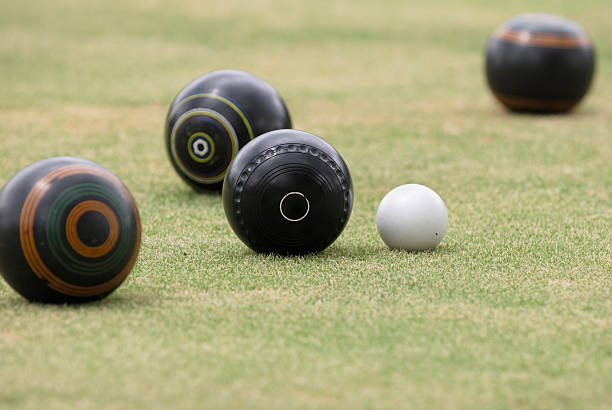General Rules of Rhythmic Gymnastics
Did you know that rhythmic gymnastics made its Olympic debut in 1984? When you step onto the competition floor, there's a multitude of rules to contemplate, guiding every move and element of your routine. From the elegant apparatus requirements to the intricate scoring system, each aspect plays a vital role in your performance. Understanding how judges evaluate your routine and the consequences of infractions can make all the difference between success and disappointment in this enthralling sport.
Scoring System
When evaluating routines in rhythmic gymnastics, judges apply a detailed scoring system that accounts for technical execution, artistic expression, and difficulty level. The scoring system in rhythmic gymnastics is vital for maintaining fairness and accuracy in competitions. Judges have the responsibility of evaluating each routine based on specific criteria to make sure that the performances are evaluated objectively.
In rhythmic gymnastics, judging accuracy is paramount. Judges are trained to focus on various elements during a routine, such as body difficulties, apparatus mastery, choreography, and musicality. Each of these components contributes to the overall score a gymnast receives. Technical execution involves precision in movements, flexibility, and control over the apparatus. Judges pay close attention to the fluidity and cleanliness of the routine, deducting points for mistakes or lack of synchronization.
Artistic expression plays a significant role in the scoring system. Gymnasts are expected to convey emotion and interpretation through their movements, connecting with the audience and judges on a deeper level. The creativity and originality of the routine, along with the choice of music and choreography, are all factors that influence the artistic score.
In addition to technical execution and artistic expression, the difficulty level of the routine also impacts the final score. Gymnasts are encouraged to incorporate challenging elements and skills into their routines to demonstrate their proficiency in the sport. Judges must accurately evaluate the difficulty of each element performed and assign the appropriate value to reflect the gymnast's skill level.
Apparatus Requirements
When it comes to rhythmic gymnastics, understanding the apparatus requirements is essential. The necessary focus lies on required apparatus types, handling guidelines, and safety measures. These points are fundamental in ensuring a smooth and successful performance.
Required Apparatus Types
Understanding the diverse types of apparatus required in rhythmic gymnastics is essential for athletes aiming to excel in this discipline. When it comes to apparatus types, you must make sure you have the following:
- Rope: Used for various elements like throws, swings, and rotations.
- Hoop: Requires precise handling for rolls, throws, and body elements.
- Ball: Enhances coordination through catches, bounces, and balances.
- Clubs: Used for complex manipulations, throws, and catches.
Each apparatus demands specific skills and techniques, so familiarize yourself with the unique characteristics of each to maximize your performance. Remember, proper maintenance and storage of your apparatus is vital for longevity, while customization and decoration can add a personal touch to your equipment.
Apparatus Handling Guidelines
To guarantee top performance and safety in rhythmic gymnastics, following specific apparatus handling guidelines is essential. Proper grip plays a critical role in executing movements smoothly and precisely. When handling the apparatus, make sure that your grip is firm yet flexible, allowing for fluid movements without compromising control. The way you hold the apparatus can enhance the overall aesthetic of your routine while also reducing the risk of accidents. Practice different grips to find the one that works best for each type of apparatus, whether it's the hoop, ribbon, ball, clubs, or rope. By mastering the art of proper grip and fluid movements, you set yourself up for success in rhythmic gymnastics competitions.
Apparatus Safety Measures
For best performance and safety in rhythmic gymnastics, adhering to specific apparatus safety measures is critical. To guarantee a safe and successful practice, remember the following:
- Equipment maintenance: Regularly check your apparatus for any signs of wear and tear. Replace any damaged parts promptly.
- Safety precautions: Always use your apparatus as intended and avoid modifications that could compromise safety.
- Injury prevention: Engage in proper warm-ups before using the apparatus to prepare your body for the physical demands.
- Proper warm-ups: Incorporate dynamic stretches and movements specific to rhythmic gymnastics to reduce the risk of injuries during practice sessions.
Routine Duration
When it comes to routine duration in rhythmic gymnastics, understanding the time limits for routines is essential for every athlete. Ensuring that your movements are perfectly synchronized with the music is vital to creating a mesmerizing performance. Building endurance and stamina is fundamental for maintaining the energy and precision required throughout the routine.
Time Limits for Routines
Adhering to the designated time limits is essential in rhythmic gymnastics routines to guarantee fair competition and consistency in performance. When it comes to the duration of routines, here are some key points to take into account:
- Individual routines: Typically last between 1 minute 15 seconds and 1 minute 30 seconds.
- Group routines: Usually range from 2 minutes 15 seconds and 2 minutes 30 seconds.
- Penalties: Going over or under the allotted time can result in deductions.
- Importance: Staying within the time limits showcases discipline and adherence to the rules, contributing to the overall fairness of the competition.
Adhering to these time limits ensures that all gymnasts have an equal opportunity to demonstrate their skills and artistry effectively.
Music Synchronization Guidelines
To maintain precise synchronization between the gymnasts' movements and the accompanying music in rhythmic gymnastics routines, keeping a consistent routine duration is essential. Choreography execution and performance quality are notably impacted by the alignment of movements with the music's tempo and beats. Emotional expression and artistic interpretation also rely on the gymnasts' ability to flow seamlessly with the music throughout the routine. Here is a table illustrating the importance of routine duration in music synchronization:
| Aspects | Impact of Proper Duration |
|---|---|
| Choreography | Enables precise execution |
| Performance Quality | Enhances overall appeal |
| Emotion Expression | Fosters deeper connection |
| Artistic Interpretation | Highlights creativity |
Endurance and Stamina
Maintaining endurance and stamina throughout a rhythmic gymnastics routine greatly impacts the athletes' performance and overall execution. Building endurance and improving stamina are essential for sustaining energy levels and executing movements with precision and grace. Here are four key strategies to enhance endurance and stamina in rhythmic gymnastics routines:
- Interval Training: Incorporate intervals of high-intensity movements followed by periods of rest to build cardiovascular endurance.
- Core Strengthening Exercises: A strong core is vital for maintaining balance and stability throughout the routine, reducing fatigue.
- Consistent Cardio Workouts: Engage in regular cardio exercises like running or swimming to boost overall stamina levels.
- Proper Nutrition and Hydration: Fuel your body with the right nutrients and stay hydrated to support endurance and stamina during training and performances.
Judging Criteria
When evaluating rhythmic gymnastics performances, judges consider a variety of criteria to assess the technical and artistic elements of the routine. Judging criteria in rhythmic gymnastics encompass both the technical execution of movements and the artistic expression displayed by the gymnast. The scoring system is based on the difficulty level of the routine, the execution of skills, and the overall artistic impression conveyed.
To provide a clearer understanding, the table below outlines the key judging criteria in rhythmic gymnastics:
| Judging Criteria | Description | Importance |
|---|---|---|
| Artistic Expression | Focuses on creativity, musicality, and emotional depth | High |
| Difficulty Level | Evaluates the complexity and intricacy of the routine | Medium |
| Execution | Assesses the precision, technique, and control of moves | High |
| Choreography | Considers the composition and flow of the routine | Medium |
Artistic expression plays a critical role in rhythmic gymnastics as it allows gymnasts to showcase their individuality and interpretation of the music. The scoring system emphasizes rewarding higher points for routines that demonstrate a seamless blend of technical difficulty, flawless execution, and engaging artistic expression. By understanding these judging criteria, gymnasts can work towards achieving a well-rounded performance that excels in both technical proficiency and artistic interpretation.
Attire Regulations
Adhering to specific guidelines regarding attire is important in rhythmic gymnastics competitions to maintain uniformity and professionalism among participants. When it comes to attire regulations in rhythmic gymnastics, there are several key factors to take into account:
- Fabric Choices: The fabrics used in rhythmic gymnastics attire should be lightweight, breathable, and stretchy to allow for ease of movement and flexibility during routines. Common fabric choices include lycra, spandex, and mesh materials that provide both comfort and functionality.
- Color Coordination: Athletes must pay attention to color coordination in their attire. Uniforms should be aesthetically pleasing and harmonious with the overall theme of the routine. Coordinating leotards with props and accessories can enhance the visual appeal of the performance.
- Comfort: Comfort is important in rhythmic gymnastics attire. Athletes perform intricate movements and require clothing that allows them to move freely without restrictions. Ill-fitting or uncomfortable attire can hinder performance and impact scores.
- Flexibility: The attire worn by rhythmic gymnasts should offer maximum flexibility. This is essential to execute the demanding acrobatic and dance elements of the routines with precision. Flexible attire ensures that movements are fluid and graceful, enhancing the overall performance quality.
Music Selection
Selecting appropriate music is important in rhythmic gymnastics routines to enhance the overall performance quality and engage both the athletes and the audience effectively. When choosing music for a routine, contemplate elements such as costume creativity, choreography innovation, theme incorporation, and emotional expression to create a cohesive and engaging performance.
Costume creativity plays a significant role in music selection as the music should complement the costume design. The music choice should reflect the style and colors of the costume, enhancing the visual appeal of the routine. Additionally, choreography innovation is essential to synchronize movements with the music's rhythm and mood. The music sets the pace and tone for the routine, inspiring unique movements and sequences that showcase the athlete's skill and creativity.
Theme incorporation is another important aspect to contemplate when selecting music. The music should align with the theme of the routine, whether it be classical, contemporary, or thematic. This coherence creates a harmonious blend of music and movements, enhancing the overall artistic expression of the performance. Additionally, emotional expression is key in engaging both the athletes and the audience. The music should evoke emotions that the gymnast can translate into their routine, captivating spectators and judges alike.
Competition Levels
To understand the hierarchy within rhythmic gymnastics, it is important to grasp the various competition levels available to athletes. These levels are structured to accommodate athletes at different stages of skill progression, ensuring fair and challenging competitions. Here is an overview of the competition levels in rhythmic gymnastics:
- Novice Level: This level is designed for beginners who are just starting in rhythmic gymnastics. Athletes at this level focus on learning basic skills and routines, often with simpler training techniques to build a strong foundation.
- Junior Level: Athletes at this level have progressed in their skills and are usually in the younger age divisions. Training techniques become more advanced, and routines are more complex, requiring a higher level of flexibility and coordination.
- Senior Level: The senior level is where elite athletes compete, showcasing highly advanced skills and routines. Athletes at this level often compete at the national and international levels, requiring rigorous training techniques to maintain peak performance.
- Masters Level: This level is open to gymnasts of a certain age, typically older than senior athletes. While still demanding regarding skills and routines, the focus shifts slightly to accommodate the physical capabilities of athletes in this age group.
Understanding these competition levels is important for athletes to set appropriate goals, train effectively, and progress within the sport. By recognizing the skill progression and age divisions at each level, athletes can navigate their rhythmic gymnastics journey with clarity and purpose.
Penalties and Disqualifications
Understanding the implications of penalties and disqualifications in rhythmic gymnastics is important for maintaining fair and consistent competition standards. Penalties in rhythmic gymnastics can have various consequences for the gymnasts. These penalties are usually incurred for infractions such as stepping out of bounds, using unauthorized apparatus, or not adhering to the specified time limits for routines. The repercussions of penalties can range from point deductions to complete disqualification from the competition, depending on the severity of the violation.
Disqualifications in rhythmic gymnastics are serious occurrences that result in the gymnast being removed from the competition. Disqualifications can happen due to a variety of reasons, including using improper techniques, failing to perform required elements, or engaging in unsportsmanlike conduct. When a gymnast is disqualified, they are typically not allowed to continue with their routine, and their scores are nullified. This can be a devastating outcome for the gymnast, as they have trained extensively for the competition only to be disqualified due to a mistake or error.
Frequently Asked Questions
Can Gymnasts Use Props or Accessories During Their Routines?
Yes, gymnasts can use props or accessories in their routines. Doing so offers benefits like enhancing performance creativity. However, drawbacks may arise from prop mishandling, impacting the overall routine quality.
Are There Specific Age Restrictions for Competing in Rhythmic Gymnastics?
In rhythmic gymnastics, age restrictions vary by level. Younger gymnasts often start training early, building skills and flexibility. As you progress, age requirements for competitions may change. Training requirements adapt to skill levels.
How Often Do Rhythmic Gymnastics Competitions Take Place?
Rhythmic gymnastics competitions occur regularly throughout the year, but scheduling conflicts can impact the frequency. It is crucial to stay updated on event calendars to guarantee participation. Stay informed to avoid missing out on opportunities.
What Kind of Training Is Recommended for Rhythmic Gymnasts Outside of Regular Practice?
To excel in rhythmic gymnastics, focus on strength training and flexibility exercises outside of regular practice. Strengthen your core for stability and power, while flexibility aids in executing graceful movements. Balance these elements for peak performance.
Are There Any Specific Safety Guidelines or Precautions That Gymnasts Need to Follow During Their Routines?
During routines, safety measures like proper warm-up, maintaining equipment, and avoiding overexertion are essential for injury prevention. Focus on technique, stay hydrated, and always listen to your body to guarantee a safe performance.






